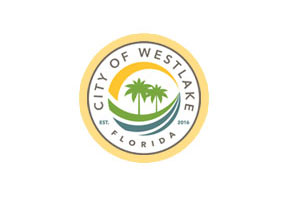With the infusion of $1.37 million from Minto Communities USA, the City of Westlake plans to hold the line on residential property taxes at 5.126 mills for the upcoming fiscal year. That is the same rate as when the city was established in 2016.
That means that the average Westlake homeowner with an assessed valuation of $350,000 and a $50,000 homestead exemption would owe approximately $1,537 in city taxes. That does not include taxes levied by other Palm Beach County taxing authorities that can drive the total property tax bite to more than 20 mills.
“Overall, Westlake is about in the middle of pack in Palm Beach County,” City Manager Kenneth Cassel said of the city’s tax rate.
Minto, which owns most of the land in the 6.5 square miles of Westlake, agreed to help support the city until it 2021. That agreement has been extended to 2023. Minto contributed $1,512,933 to the city’s general fund during the current year, according to a comparison shared in the budget being proposed by staff to the Westlake City Council.
The council has set a Monday, Aug. 2 workshop to study the budget proposal and Sept. 13 for a first public hearing.
Westlake is moving in the right direction in terms of being able to lower taxes for homeowners in the future, Cassel said, thanks to the burgeoning commercial development along Seminole Pratt Whitney Road, which bisects the municipality. That development includes plans for a Publix shopping center with several outparcels and a rejuvenated Grove Market shopping plaza with Winn-Dixie set to return. “It all depends on how fast commercial development comes in,” Cassel said. “But we’re the fastest growing city in the county and in most of the state in terms of taxable value.”
However, Cassel is quick to add that Westlake is not seeking to increase the tax base simply by accepting plans from any outlet that might want to put up a cookie-cutter building.
“We’re selective about who we’re bringing in,” Cassel said. “There’s a specific vision for the community. It has to fit. It has to be a reflection of the city… something that is sustainable.”
The proposed budget does reflect a growing city weening itself off developer support, he said, with Minto’s aid to account for only 37 percent of the budget next year — down from 50 percent in the current year.
Overall, Westlake’s general fund budget is slated to increase by 20.9 percent ($637,000) to $3,685,700. That includes a projected 15 percent increase in operating expenses to $2,901,600.
The largest planned increase is an additional $280,300 for community services, bringing the total to $1,037,300 and accounting for 36 percent of the city’s budget. The Community Services Department consists of solid waste collection, lighting for roads and law enforcement, which is contracted through the Palm Beach County Sheriff’s Office. Meanwhile, the amount of money the city is planning to tuck away into its reserve fund will almost double from $234,500 this year to $464,300 next year; and a 12.7 percent increase is planned in the contingency fund to $151,000.
A $78,000 budget increase (38.2 percent) is planned for the city manager’s office and a $81,500 increase (41.5 percent) for the city clerk’s office.
There also are plans for $50,000 in capital expenditures, while there were none in the 2021 budget.
On the flip side, staff proposes a 24.6 percent cut to the personnel budget, knocking that line item down to $118,800; the city attorney’s budget is expected to drop by almost 50 percent to $275,000; and the city expects a 15.5 percent increase in licenses, permits and fees to $226,800.
According to the budget proposal, Westlake’s biggest challenges in 2022 will be locating and establishing a permanent city hall; final implementation of software allowing electronic submission, approval and inspections reporting in the Building Department; maintaining the proper level of services while minimizing the overall cost of services; drafting and passage of the remaining Land Development Regulations in order to move from the interim code; identifying services needed in the future and available revenues; maintaining cooperation with other agencies surrounding and impacting the city; and working with the developers and other third parties to maintain the original vision of the community.








